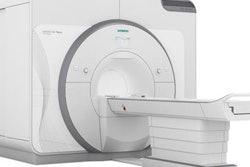Sunday, November 25 | 10:45 a.m.-10:55 a.m. | SSA15-01 | Room E353B
3D virtual models based on pelvic MRI scans can facilitate presurgical planning for hip joint surgery about as well as 3D CT models can, according to researchers from Switzerland.Femoroacetabular impingement is a condition characterized by abnormal bone growth around the hip that can lead to joint disease. Traditionally, clinicians review conventional CT or MRI scans to help them prepare for the surgical treatment of patients with this hip joint condition.
"However, surgeons usually have to rely on static imaging and clinical findings, which can be unspecific for planning of the surgical approach and the required correction," presenter Florian Schmaranzer from the University of Bern told AuntMinnie.com. "This can be particularly challenging for complex deformities which cause intra- and extra-articular impingement."
To improve upon standard presurgical preparation, clinicians have been simulating hip joint motion with patient-specific 3D virtual models before conducting the procedure. Schmaranzer and colleagues created 20 such models by acquiring CT and MRI scans of patients with femoroacetabular impingement and converting the scans into 3D models.
The researchers used proprietary software to detect various parameters critical for presurgical planning -- such as the joint's range of motion and the precise location of the affected area of the hip -- on the 3D models. They found that relevant measurements drawn from the 3D CT and 3D MRI models were nearly identical, with no statistically significant difference between them.
"This is the first step toward radiation-free customized treatment planning for joint-preserving hip surgery based on a clinical routine MRI protocol," Schmaranzer said. "This has great potential to improve the understanding of the femoroacetabular impingement syndrome and to define patient-specific treatment plans for improved surgical outcome."



.fFmgij6Hin.png?auto=compress%2Cformat&fit=crop&h=100&q=70&w=100)




.fFmgij6Hin.png?auto=compress%2Cformat&fit=crop&h=167&q=70&w=250)











